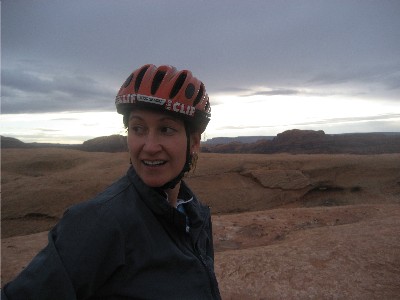“…one word is worth a thousand pictures. If it’s the right word. The good word.” –Edward Abbey
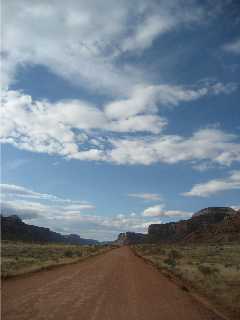 If you’ve ever read any of Edward Abbey’s books, you’ll find it impossible to wander around in Moab, Utah without thinking about him. Abbey—author and famed desert anarchist—worked as a seasonal park ranger at Arches National Park and based Desert Solitaire on his 1956 and 1957 summer seasons there. Abbey claimed he earned only $1.95 an hour, and with a wife and a child to support, he must have felt compelled to justify his choice of employment besides its financial rewards. “I like my job,” Abbey says in Desert Solitaire, “The fringe benefits are priceless: clean air to breathe (after the spring sandstorms); stillness, solitude, and space; an unobstructed view every day and every night of sun, sky, stars, clouds, mountains, moon, cliffrock and canyons; a sense of time enough to let thought and feeling range from here to the end of the world and back; the discovery of something intimate—though impossible to name—in the remote.”
If you’ve ever read any of Edward Abbey’s books, you’ll find it impossible to wander around in Moab, Utah without thinking about him. Abbey—author and famed desert anarchist—worked as a seasonal park ranger at Arches National Park and based Desert Solitaire on his 1956 and 1957 summer seasons there. Abbey claimed he earned only $1.95 an hour, and with a wife and a child to support, he must have felt compelled to justify his choice of employment besides its financial rewards. “I like my job,” Abbey says in Desert Solitaire, “The fringe benefits are priceless: clean air to breathe (after the spring sandstorms); stillness, solitude, and space; an unobstructed view every day and every night of sun, sky, stars, clouds, mountains, moon, cliffrock and canyons; a sense of time enough to let thought and feeling range from here to the end of the world and back; the discovery of something intimate—though impossible to name—in the remote.”
Abbey was vehemently opposed to the idea of having cars—“steaming shells of steel and glass”—driving through the national parks, but whether or not he liked the idea, a ribbon of asphalt was rolled out in Arches anyway, and for a $15 entry fee, visitors can drive right up to their pay-per-night campsites (those are $10 a night). I guess I like my wilderness a bit more on the wild side, but I also want others to have the opportunity to experience the mind-blowing beauty of places like Arches National Park. So I can’t complain that there are now sinks and toilets and other amenities at Arches. I’m thankful for writers like Edward Abbey, however—writers who don’t mind viciously defending the natural world and inspiring others to keep what remains of it intact.
Some more advice from Abbey:
“If we could learn to love space as deeply as we are now obsessed with time, we might discover a new meaning in the phrase to live like men.”
On literary rejections:
“…my policy was, Always reject rejections. Apply unremitting pressure until the editors crack and yield.”
“[Americans] see wilderness disappearing, slipping away, receding into an inaccessible past. But they are mistaken. That world can still be rescued. That is one reason why I myself am still willing to write about it.”
He’s kidding…but it’s still funny:
“Speaking for myself, I write mainly for the money. Only a blockhead would write for anything else.”
“I’m willing to listen to reason. If I hear any.”
“When the situation is hopeless, there is nothing to worry about.”
Quotes from Edward Abbey’s Desert Solitaire (1968) and Abbey’s Road (1979).
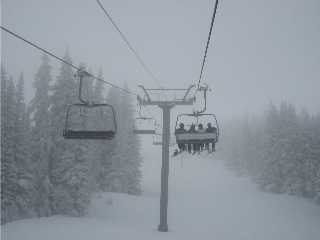 I watched the Colorado snow reports from my laptop in Louisville, Kentucky during the week I spent there before Christmas. At one point, the tally was showing 49 inches of snow in Beaver Creek during a 7-day period, and 41 inches for Vail. Don’t get me wrong—I love my parents and was overjoyed to spend time with them, but I also ran laps in their neighborhood and dreamed of the snow that would await me when I returned to Vail. Now that I’m back, I can soundly say—yes!—the winter ski season is in full swing, the town is packed with tourists, and there’s a jolly feel in the air.
I watched the Colorado snow reports from my laptop in Louisville, Kentucky during the week I spent there before Christmas. At one point, the tally was showing 49 inches of snow in Beaver Creek during a 7-day period, and 41 inches for Vail. Don’t get me wrong—I love my parents and was overjoyed to spend time with them, but I also ran laps in their neighborhood and dreamed of the snow that would await me when I returned to Vail. Now that I’m back, I can soundly say—yes!—the winter ski season is in full swing, the town is packed with tourists, and there’s a jolly feel in the air. 


 Ever wondered where the bourbon in those holiday bourbon balls comes from? I won’t create a cliffhanger here. It’s likely from Kentucky, and probably from somewhere near Bardstown—“The Bourbon Capitol of the World.” Bardstown is just south of Louisville, a geographic location known for its limestone-filtered water and families that have bourbon in their blood. The Maker’s Mark and Jim Beam distilleries, among a handful
Ever wondered where the bourbon in those holiday bourbon balls comes from? I won’t create a cliffhanger here. It’s likely from Kentucky, and probably from somewhere near Bardstown—“The Bourbon Capitol of the World.” Bardstown is just south of Louisville, a geographic location known for its limestone-filtered water and families that have bourbon in their blood. The Maker’s Mark and Jim Beam distilleries, among a handful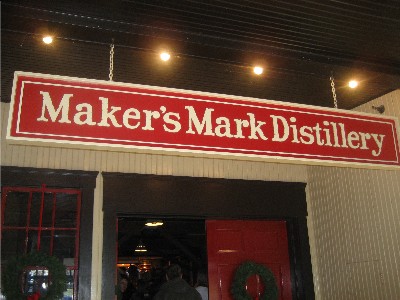


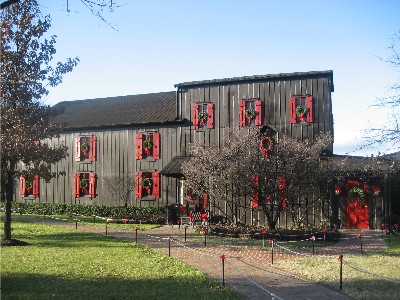
 Between wrapping gifts and stuffing my face with sugar cookies, I’ve been reading. For some reason—why, I’m asking myself now—I set up three book reviews for this month. Unfortunately none of them are the kind of books that get a person in the holiday mood, but I did come across this one last week at the Rocky Mountain News book critic holiday book frenzy: Les Standiford’s The Man Who Invented Christmas: How Charles Dickens’s A Christmas Carol Rescued His Career and Revived Our Holiday Spirits. I picked this book up as one within the limits of my gift allowance, and I’ve been thumbing through it on breaks from other projects. Most of us know the Christmas Carol story, but this book gives readers the story behind the story, and it’s quite inspiring. When Dickens wrote it in 1843, he was 32, and his career as a writer was on shaky grounds. Dickens had already written several successful books, but the three he wrote right before A Christmas Carol hadn’t been selling well. He had a family to support and wasn’t sure of his future. In a mere six weeks, Dickens reversed his fortune by writing the 30,000-word manuscript that became The Christmas Carol. This story has become a part of Christmas culture, influencing the ways we relate to the holiday as a time for giving and for sharing with family members. And—who can resist watching the Disney version when it comes on TV? In short, I recommend this book for literature lovers who want to dwell in the holiday spirit a little bit longer.
Between wrapping gifts and stuffing my face with sugar cookies, I’ve been reading. For some reason—why, I’m asking myself now—I set up three book reviews for this month. Unfortunately none of them are the kind of books that get a person in the holiday mood, but I did come across this one last week at the Rocky Mountain News book critic holiday book frenzy: Les Standiford’s The Man Who Invented Christmas: How Charles Dickens’s A Christmas Carol Rescued His Career and Revived Our Holiday Spirits. I picked this book up as one within the limits of my gift allowance, and I’ve been thumbing through it on breaks from other projects. Most of us know the Christmas Carol story, but this book gives readers the story behind the story, and it’s quite inspiring. When Dickens wrote it in 1843, he was 32, and his career as a writer was on shaky grounds. Dickens had already written several successful books, but the three he wrote right before A Christmas Carol hadn’t been selling well. He had a family to support and wasn’t sure of his future. In a mere six weeks, Dickens reversed his fortune by writing the 30,000-word manuscript that became The Christmas Carol. This story has become a part of Christmas culture, influencing the ways we relate to the holiday as a time for giving and for sharing with family members. And—who can resist watching the Disney version when it comes on TV? In short, I recommend this book for literature lovers who want to dwell in the holiday spirit a little bit longer.  I’ve developed a fascination for Cisco, a collapsing town in near-middle-of-nowhere Utah. This modern ghost town sits along Utah’s State Route 128, not too far off of I-70—but along a route that people in a hurry wouldn’t bother traveling. I’ve watched Cisco become more ramshackle over the past few years since I started taking frequent trips to southwest Utah from Colorado. The first time I passed Cisco, I remember being alarmed at its buildings collapsing so near the road. I slowed down as I passed by so that I could stare at its remains, but I didn’t get out of my car. I’ve since stopped a few times and walked around the ruins closest to the road, but I get a spooky feeling when I do—as if people are still there, somewhere. I’ve rooted around for more information about this place and still have not met anyone or confirmed whether or not real-live people live in Cisco year round. A person I know in Moab told me that some folks may live there in the summer and sell supplies to river runners. But on my recent late-autumn visit, the town looked pretty abandoned to me:
I’ve developed a fascination for Cisco, a collapsing town in near-middle-of-nowhere Utah. This modern ghost town sits along Utah’s State Route 128, not too far off of I-70—but along a route that people in a hurry wouldn’t bother traveling. I’ve watched Cisco become more ramshackle over the past few years since I started taking frequent trips to southwest Utah from Colorado. The first time I passed Cisco, I remember being alarmed at its buildings collapsing so near the road. I slowed down as I passed by so that I could stare at its remains, but I didn’t get out of my car. I’ve since stopped a few times and walked around the ruins closest to the road, but I get a spooky feeling when I do—as if people are still there, somewhere. I’ve rooted around for more information about this place and still have not met anyone or confirmed whether or not real-live people live in Cisco year round. A person I know in Moab told me that some folks may live there in the summer and sell supplies to river runners. But on my recent late-autumn visit, the town looked pretty abandoned to me:

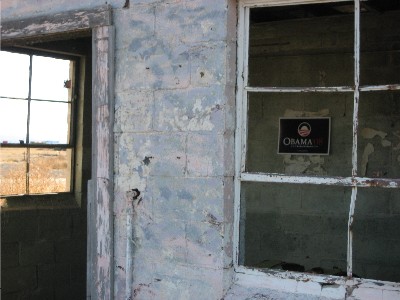
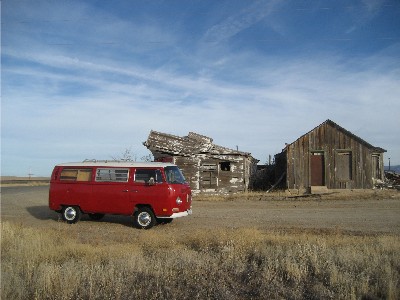
 There’s mountain biking. And then there’s mountain biking in Moab. I haven’t been anywhere that comes close. A sense of infinite openness comes with being in this part of Utah, and mountain biking on slickrock, sandy trails is an experience in itself. Moab is an outdoor adventurer’s delight—with rock climbing, river running, canyoneering, and mountain biking all right there (okay…there’s also the motor-engine off-road enthusiasts swarming around…but I try to ignore the fact that Moab is a nesting spot for them, too).
There’s mountain biking. And then there’s mountain biking in Moab. I haven’t been anywhere that comes close. A sense of infinite openness comes with being in this part of Utah, and mountain biking on slickrock, sandy trails is an experience in itself. Moab is an outdoor adventurer’s delight—with rock climbing, river running, canyoneering, and mountain biking all right there (okay…there’s also the motor-engine off-road enthusiasts swarming around…but I try to ignore the fact that Moab is a nesting spot for them, too).


